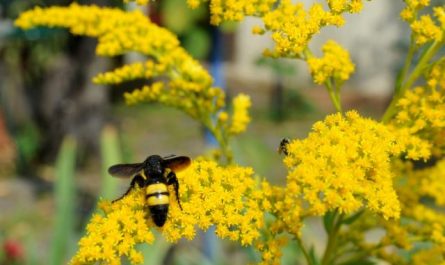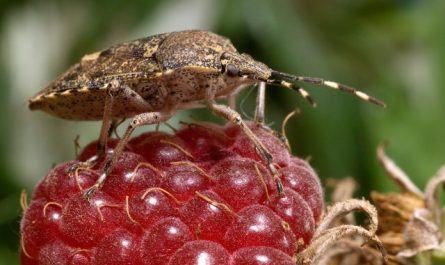Summer has long passed, followed by autumn, and we continue to fight insects, but now in our homes. Moths do not give many of us peace! And their presence is often so annoying that we give up. It seems that everything is hidden in its place, things are dried, cereals are packed in special containers, but it catches your eye again and again in its simple flight from room to room. What types of moths are there? Where do they come from in our homes? How to fight them? Let’s figure it out.

What types of moths are there?
The moth is a small, nondescript winged insect from the family of true moths. The size of its body does not exceed 8 mm, and the wingspan is 18 mm. The color of the imago (adult insect) can vary from gray to dirty brown. The moth reproduces with the help of eggs, which turn into caterpillars, and they are the ones that cause harm in our homes.
The moth belongs to the order of Lepidoptera. It leads a nocturnal lifestyle. It is distributed throughout the world and includes about 15 thousand species. In our homes, several of them are most often found – these are the food and clothes moths. The name reflects the nature of the pest’s nutrition. And it is near food that this moth can be found, and in it you can find its larvae, cocoons, remnants of the web and excrement.
food moth
The food moth can feed on pasta, cereals, flour, seeds, spices, dried fruits, sugar, chocolate, dried mushrooms and herbs. It is often found in dry confectionery products – cookies, biscuits, chocolates, which is why it is sometimes called bread moth. In nuts – then it is called nut moth, etc. But in our homes, most often, there are two types of food moth – barn and grain, which spoil the corresponding products.
It is quite easy to detect the presence of a food moth in the house – it has the ability to glue its food into lumps. The grain damaged by it has a round passage, the walls of which are covered with a silk web – the larvae gnaw into the grains and eat them from the inside, and only then eat them from the outside. Sometimes we confuse food moths with similar species that have entered our home – the mill moth, the flour moth, the southern barn moth.
During the year, the food moth produces only one or two generations. Its butterflies fly out in the spring – in May. They live 5-11 days. They can fly a distance of up to 2-3 km. They are active at night. They lay up to 160 eggs.
Interestingly, the barn moth was originally a forest species, but gradually moved completely to living near humans. In nature, it feeds on wood fungi and rotten wood.


Clothes moth
The clothes moth, furniture moth, fur moth or, as it is also called, room moth, differs from the food moth by the uniform yellowish-golden color of the imago. Its habitat is cabinets and dressing rooms, carpets and furniture upholstery. It feeds on natural fabrics – silk, wool, fur, feathers. But not only. The larvae of the clothes moth are found in cereals, flour, and dried fruits. Unlike the food moth, they do not build a house for themselves, but leave a trace in the form of a web, laying a path along the material on which they live.
The clothes moth has only one generation per year. The moths emerge from their pupae in the fall. They live for about 7 days. On the first day, they mate and then sit motionless, mostly in secluded dark places. During her short life, the female lays from 60 to 100 eggs.
Like the barn moth, the clothes moth is also found in the wild, mainly in bird nests.
How do moths get to us?
Moths are unwelcome residents of our homes, but it is impossible to insure against them appearing in your cereal or wardrobe, on furniture or under a carpet. After all, an adult can fly in through an open window, and a larva can come to you not only in cereals bought in bulk, but also in a sealed bag of noodles, or under the wrapper of, for example, a chocolate candy, or on new clothes made of natural fabric.
For this reason, it is important to think about how to prevent it from appearing in the house, and how to prevent it from taking root and starting to multiply, causing harm and fraying your nerves.

Moth control methods
The most comfortable conditions for the reproduction of food moths are temperatures within the range of +22…+25 °C with air humidity over 60%. Temperatures below +13 °C determine the lower threshold of their development.
Fighting moths is indeed quite problematic, they are not so easy to detect. Their eggs have a diameter of only 0,3-0,5 mm at their widest point, and the larva hatched from them is about 1 mm long and only in adulthood – 12 mm. The moth reproduces quickly, is resistant to many insecticides, which, however, are better not to use in living quarters, especially in the kitchen.
The easiest way to prevent moths from appearing in your home is to look not only at the expiration date of the product and the cleanliness of the seller, but also at the packaging itself when buying sugar, cereals, pasta, dried fruits, nuts, and candies. The presence of stuck-together lumps in the product is a clear sign of the presence of unpleasant “residents” in it. And most often, such “surprises” are sold at chaotic markets and sales. In stores, the seller, like the manufacturer, values their reputation and cares about the cleanliness of the products, so moth-damaged goods are much less common.
Another preventive measure to prevent moths from appearing in the house is to use repellent odors in places where they may live. This harmful insect does not like the aroma of citrus, wormwood, tansy, lavender, eucalyptus, cloves, rosemary, dill, geranium. Therefore, you can place dried bouquets of them on the shelves of pantries and wardrobes or aromatize the air with essential oils.
You can fill small bags with herbs, hang them in closets, place them on shelves between things, between products. However, it is important to remember that any sachet evaporates quite quickly, so it must be changed or refreshed periodically.
Moths also do not like the smell of vinegar. When wet cleaning, shelves can be wiped with a cloth soaked in water with the addition of vinegar or a fragrance with the smell of any of the plants listed above. But again, this must be done regularly, while inspecting supplies for pests. If moths are found, they need to be gotten rid of, and at the same time, all possible places for them to live should be reviewed.
Another way to prevent moths from settling in your supplies is to heat-treat the products you are storing. Before placing cereals, herbs, dried fruits, and mushrooms you are storing in advance, you need to heat them in an oven at a temperature of +60 °C for half an hour. Then pack the product in airtight packaging.
And finally, insecticides can help against moths. They can be purchased in hardware stores as gels, liquid concentrates, concentrated emulsions, aerosols, fumigators and glue traps. But they must be used with caution, following the instructions provided, since insecticides are not non-toxic. However, even here the product does not always show 100% results.




















